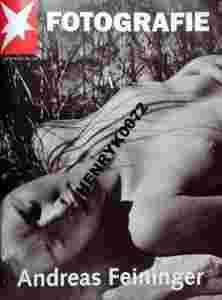Born in France, the son of renowned artist Lyonel Feininger, Andreas Feininger was educated as an architect in Germany before he became a photographer. After working in Sweden, he came to the United States and in 1943, became a staff photographer at LIFE magazine, where he spent the next twenty years. He is best known for iconographic images of his adopted land, with a focus on powerful cityscapes, which are imbued with the strict sense of form and proportion developed during his architectural studies. Indeed, the city was to be the focus of much of his work: "I see the city as a living organism, dynamic, sometimes violent." The scale and dynamism of Feininger's work captured the vast scope and raw majesty of an energetic and evolving land. His precise and unorthodox vision magnified the grandeur in the everyday and the mundane. An accomplished technician and acclaimed writer, Feininger is also widely respected for his photographic textbooks.
Next week sees the opening of an interesting new exhibition in New York that explores the early career of legendary Life photographer Andreas Feininger. Hosted by Scandinavia House, the exhibition features 51 photographs of Stockholm by the German-American photographer Andreas Feininger (1[zasłonięte]906-19) taken between 1933 and 1939. Best known today for his stunning urban panoramas of Manhattan and the extreme close-ups of natural objects he took during his 20 years as a staff photographer for Life Magazine, Feininger began his career in Stockholm in the 1930s. Trained at the Bauhaus school in Weimar, Germany, he moved to Paris and then Stockholm when the Nazis came to power and quickly established himself as one of Sweden’s foremost architectural photographers.
The Stockholm photographs reflect his architectural training as well as Bauhaus theories of photography considered provocative by the Swedish establishment in the 1930s. During Feininger’s years in Sweden he developed techniques and themes he was to explore throughout his long career, honing his photographic vision in a city he considered superior to other European and American capitals from a photographer’s point of view. His carefully-composed, sharply-focused street scenes and harbor panoramas—often taken with a super-telephoto camera of his own design—demonstrate the great technical skill that astonished American audiences in later decades.

